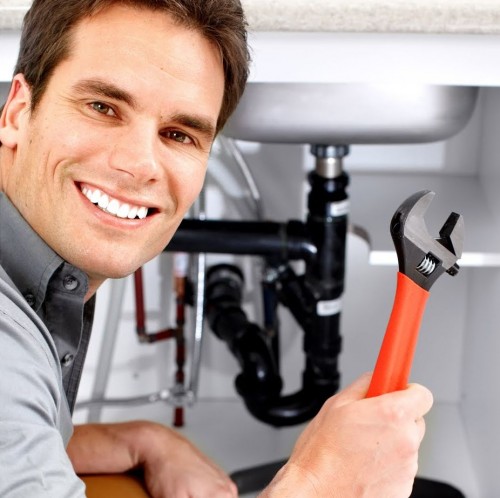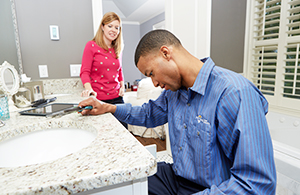Grasping the Foundations of Home Plumbing: A Beginner's Primer
Grasping the Foundations of Home Plumbing: A Beginner's Primer
Blog Article
Just about everyone maintains their own individual idea with regards to What to Know About Plumbing: Basics, Tips, and Insights.

Plumbing is a vital facet of any kind of home, responsible for supplying tidy water for alcohol consumption, cooking, and showering, as well as removing wastewater safely. Understanding the fundamentals of home plumbing is vital for every single homeowner to make certain appropriate upkeep, troubleshooting, and, if essential, repairs. In this beginner's overview, we'll cover the basic ideas of home plumbing to assist you come to be a lot more knowledgeable about how it functions.
Water Heating System
The water heating unit is responsible for heating water for residential usage, including bathing, cooking, and cleaning. Common types of water heaters consist of tank-type water heaters, tankless (on-demand) hot water heater, and heatpump hot water heater. The hot water heater is linked to the supply of water system and supplies warm water to plumbing components as required.
Water drainage System
The drainage system removes wastewater from your home and brings it away to a sewage treatment facility or septic system. It contains a network of pipelines, fittings, and components that move wastewater from plumbing components to the main sewer line or septic system. Appropriate drainage is vital to protect against blockages, back-ups, and sewer leaks.
Air flow System
The ventilation system helps preserve proper air pressure and prevent sewage system gases from entering your home. Air vent pipelines, also called vent stacks, expand from plumbing fixtures to the roof covering, permitting sewer gases to run away safely outside. Air flow pipes also enable air to enter the water drainage system, assisting in smooth wastewater flow and avoiding suction or vacuum cleaner results.
Water System
The water system brings clean water right into your home from a community water resource or a personal well. It contains a primary water line that links to your home's plumbing system, generally situated underground. A water meter gauges the amount of water taken in, while a shut-off valve enables you to manage the flow of water into your home.
Plumbing Components
Plumbing components are tools that provide water to various parts of your home and include sinks, faucets, bathrooms, showers, bath tubs, and appliances such as dishwashing machines and washing machines. Each fixture is linked to the water system through pipelines and fittings and might have its shut-off valve for upkeep or emergency situations.
Common Plumbing Tools
Having the right devices on hand is essential for performing standard plumbing repair work and upkeep jobs. Usual plumbing tools include adjustable wrenches, pipe wrenches, pliers, pipe cutters, hacksaws, bettors, augers (or drain serpents), and Teflon tape. Having these devices readily available can aid you tackle small plumbing issues efficiently.
Standard Plumbing Repair Work
While some plumbing repairs might call for specialist aid, lots of common problems can be attended to with standard do it yourself methods. Learning how to repair a leaking tap, unblock a drain, change a bathroom flapper, or repair a dripping showerhead can save you time and money on plumbing repairs.
Verdict
Comprehending the fundamentals of home plumbing is important for every single home owner to keep a secure, useful, and effective plumbing system. By familiarizing on your own with the supply of water system, plumbing fixtures, water drainage system, ventilation system, common plumbing tools, and standard fixings, you can with confidence attend to minor plumbing problems and guarantee your home's plumbing system operates smoothly.
Plumbing for Beginners: A Comprehensive Guide
If you’re a beginner when it comes to plumbing, don’t worry; you’re not alone. Plumbing may seem intimidating, but with the right knowledge and a little practice, you can handle many common plumbing issues on your own. In this comprehensive guide, we will demystify the world of plumbing for beginners, providing you with the basic knowledge and skills needed to tackle common plumbing problems and even take on some DIY plumbing projects.
The Importance of Basic Plumbing Knowledge for Beginners:
First and foremost, basic plumbing knowledge gives you a solid foundation. It helps you grasp the key concepts and terminology that are essential in this field. By learning the basics, you’ll be able to build upon that knowledge and tackle more complex plumbing tasks in the future.
Having a basic understanding of plumbing also enables you to handle common issues that may arise in your home. Picture this: a leaky faucet or a clogged drain. With some basic plumbing knowledge, you’ll have the confidence to troubleshoot and fix these problems on your own. It saves you from unnecessary expenses and the hassle of waiting for a professional to arrive.
As a beginner, learning the basics of plumbing empowers you to take care of your own home. It gives you a sense of independence and self-reliance. You’ll no longer have to rely solely on professionals for every small issue that pops up. Instead, you can handle many tasks yourself, saving time and money in the process.
Remember, everyone starts as a beginner. Embrace the learning process and take small steps to expand your plumbing knowledge. There are plenty of online resources, tutorials, and even local workshops that talk about plumbing for beginners.
Essential Tools for Plumbing for Beginners
As you start your plumbing journey, having the right tools in your toolbox is crucial. Let’s explore some of the must-have tools:
Adjustable Wrench:
This versatile tool is a staple in any plumber’s toolbox. It allows you to tighten or loosen nuts and bolts of various sizes. Make sure to have an adjustable wrench with a comfortable grip.
Pipe Wrench:
A pipe wrench is specifically designed for gripping and turning pipes. It has serrated jaws that provide a strong grip, making it easier to loosen or tighten threaded pipes and fittings.
Plunger:
The plunger is a simple yet effective tool for clearing clogged drains and toilets. It creates suction when you push and pull, helping to dislodge blockages. Keep a good-quality plunger handy for those unexpected clogs.
Pipe Cutter:
When it comes to cutting pipes, a pipe cutter is your go-to tool. It creates clean, precise cuts without damaging the pipe. Look for a pipe cutter that can handle the pipe sizes you’re working with.
Hacksaw:
A hacksaw is useful for cutting through pipes, screws, and other materials. It’s a versatile tool that can handle different cutting tasks. Remember to use a blade suitable for cutting metal.
Tape Measure:
Accurate measurements are crucial in plumbing. A tape measure allows you to measure pipe lengths, distances, and dimensions accurately. Opt for a sturdy tape measure that extends a good length.
Pliers:
Pliers come in handy for various tasks, such as gripping, bending, and cutting. Slip-joint pliers with adjustable jaws are great for gripping pipes, nuts, and bolts.

We are very excited about Plumbing basics: How your home plumbing works and I am assuming you appreciated my blog posting. I beg you take the opportunity to distribute this content if you enjoyed it. We love your readership.
Call Today Report this page